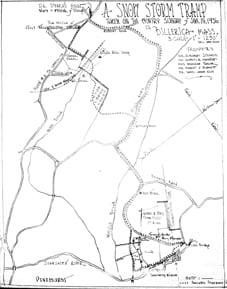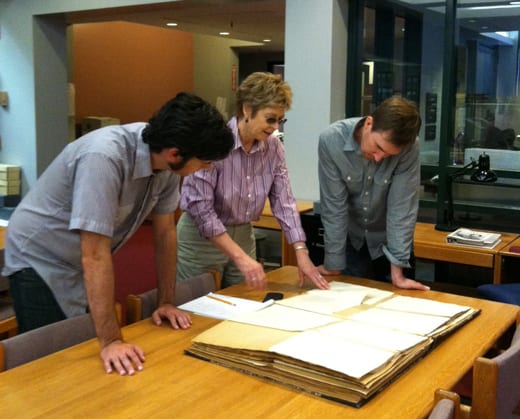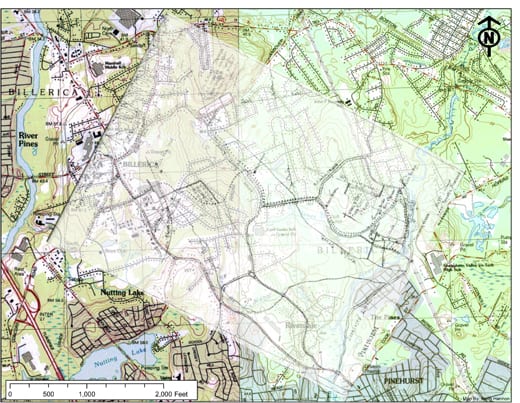Dan Kiley, a Winter Tramp in Plan
Dan Kiley, a Winter Tramp in Plan

Before the future landscape architect Daniel Urban Kiley entered Harvard in 1936, he worked in the office of Warren H. Manning in Billerica, Massachusetts. One snowy January day, Kiley recorded a snowshoe “tramp” that he and Manning made through Billerica with a few others, and the document recently surfaced during a trip to the Manning archives at the Center for Lowell History, University of Massachusetts, Lowell.
The map, which Kiley titled “A Snow Storm Tramp, Taken on the Wintry Sunday of Jan. 19, 1936,” included major roads and waterways, and was surprisingly detailed for what appears to be a record of just a casual walk with his boss on a Sunday during a snow storm.

It shows the location of a “Black Aster Swamp” and an unlabeled orchard, for example, both of which they walked through. One of the researchers, Keith Hannon, made a scan of the map and, back at the office, overlaid it on a modern-day map using GIS (geographic information systems) software. The overlay revealed that the route the “trampers” took in 1936 follows almost all of the same roads that exist today.

During his approximately 60-year career, Kiley (1912–2004) became one of the most highly acclaimed American landscape architects of the twentieth century. He considered his years with Manning fundamental to his education and particularly remembered Manning encouraging him to visit Naumkeag, the work of another former employee of Manning’s, Fletcher Steele. One of Kiley’s best known residential designs is the Irwin Miller House in Columbus, Indiana, now owned by the Indianapolis Museum of Art and open to the public.
If you would like to keep up with the discoveries of our Manning researchers, follow us on Facebook and Twitter.